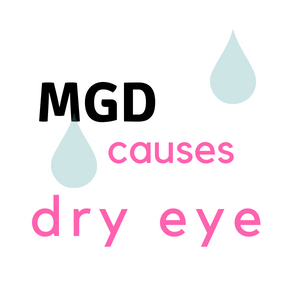Meibomian Gland Dysfunction | Common Cause of Dry Eye
July 24, 2018

This article continues our recognition of Dry Eye Awareness month during July.
Meibomian gland dysfunction (MGD) is one of the most common causes of dry eye. It affects the quality of the “meibum,” the oily layer of the tear film which prevents rapid evaporation of tears. Dry eye is a very common eye problem and affects nearly 25 million Americans. Dry eye can affect any age group, may occur alone or associated with disease and the prevalence (chance you can get dry eye) increases with age.
Normal Tear Film
As you have learned this month, the normal tear film is composed of three layers:
- Meibum - the oily superficial layer of the tear film that slows evaporation
- Aqueous - the actual “tear” itself, the middle watery layer
- Mucin - allows the tear to spread evenly across the cornea
Meibomian Gland Function (MGD)
Meibum is produced from the meibomian glands which reside within each lid. There are 20-30 glands per lid. Meibomian glands secrete the oily meibum onto the tear film with each blink of the eye.
Meibum coats the tear film and prevents rapid evaporation.
Abnormal Meibomian Gland Function
Poor quality meibum or insufficient amounts of meibum allow the tears to evaporate too rapidly causing dry eye.
Poor quality meibum occurs with “diseased” glands. The oily substance simply does not coat the tear film for an adequate duration, causing rapid evaporation.
Meibum can also become very thick, like toothpaste, and the thickened oil cannot be secreted from the gland. In this case, the oil accumulates and blocks the glands.
If you would like to make an appointment with Drs. Whitten or Rose, you may CALL US or USE OUR CONTACT FORM.



